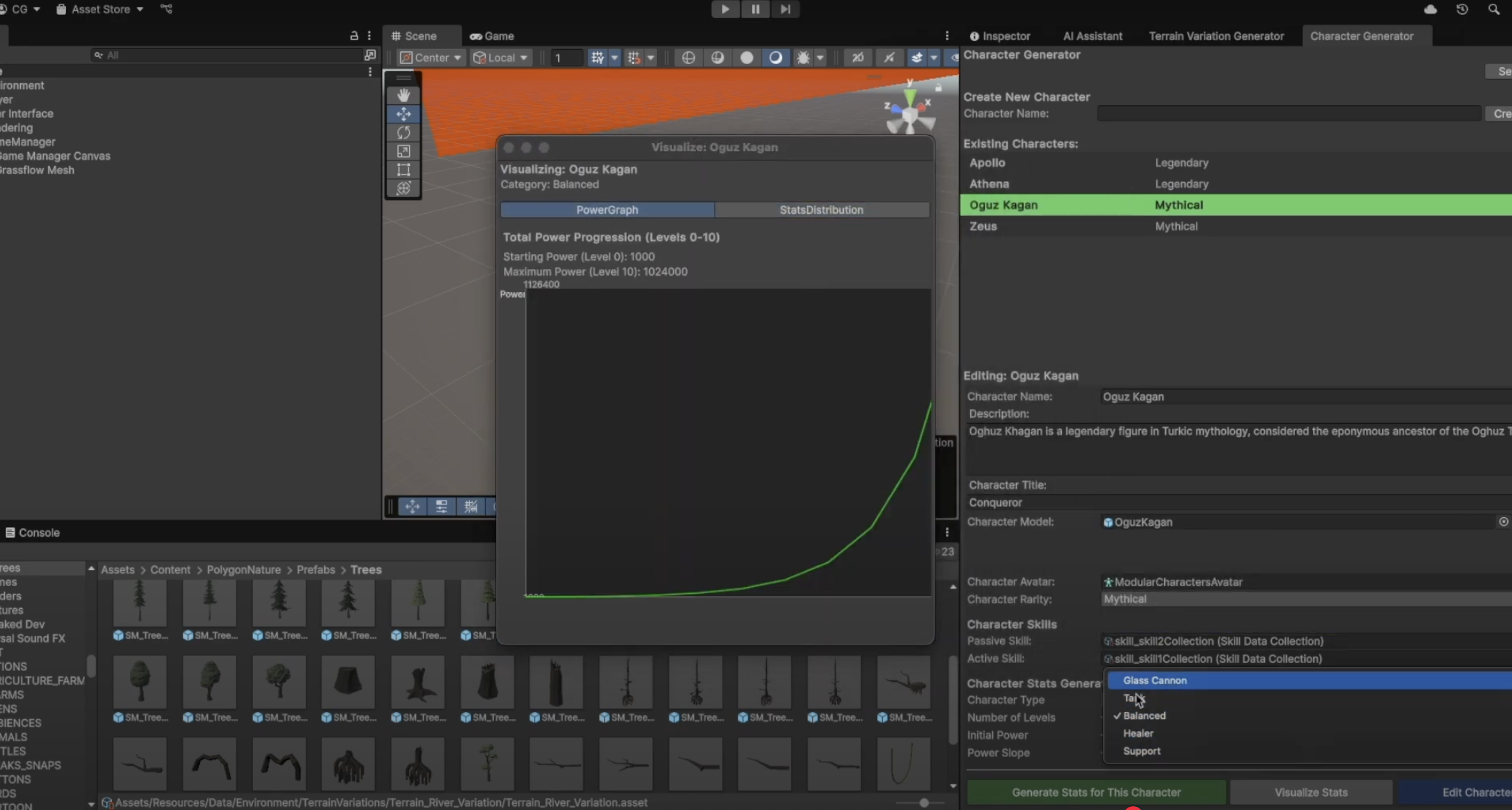Unity AI Assisted Optimization Framework
Unity AI Assisted Optimization Framework is the ultimate game design solution that combines cutting-edge performance optimization with AI-driven content generation, game economy prediction and player engagement analysis.
Performance Revolution
The Unity AI Assisted Optimization Framework introduces a revolutionary upscaling solution that serves as one of its most critical components. Through intelligent rendering optimizations and smart resource management, the framework achieves remarkable performance gains of over 150 FPS increase on Apple M3 chipset hardware, setting new standards for Unity-based game development.
At the core of the optimization strategy lies a component-based architecture that ensures every system operates at peak efficiency. The framework reimagines traditional Unity workflows by implementing smart physics calculations and features like the smart unlimited grass system, which dynamically manages rendering based on camera distance and available system resources, ensuring consistent frame rates even in the most demanding scenarios.

AI-Driven Content Generation
The Unity AI Assisted Optimization Framework features integrated AI agents powered by large language models, enabling dynamic content generation at runtime. These intelligent agents can generate character data, enemy specifications, player statistics, and complex game mechanics on-demand, creating truly dynamic gaming experiences that adapt to player behavior and preferences.
The framework utilizes Wave Function Collapse algorithms combined with terrain variations to create procedurally generated environments. Every element is represented as scriptable objects that can be dynamically modified by AI systems, ensuring infinite replayability and content variety.

Smart Physics System
The framework implements an intelligent physics calculation system that revolutionizes how game entities interact with each other. Rather than having every entity perform expensive physics calculations independently, the system employs a centralized approach where the player entity handles complex calculations and intelligently communicates relevant information to other entities.
For example, enemies don't actively "see" the player through traditional line-of-sight calculations. Instead, the player calculates visibility states and informs enemies when they should be aware of the player's presence. This approach reduces computational overhead while maintaining realistic gameplay mechanics, demonstrating the framework's philosophy of "throwing one stone to hit two birds."
Optimized Skill System
Spell casting and skill execution are handled through an optimized physics-based system that builds upon Unity's native physics while implementing smart optimizations. Rather than constantly polling physics systems, the framework calculates affected actors intelligently, determining impact zones and affected entities in a single, efficient operation that maximizes performance while maintaining gameplay accuracy.
Statistical Graph Analytics
Every statistical element within the framework is connected to a comprehensive stat manager that visualizes game balance through an interconnected graph system. This powerful analytical tool allows developers to understand game economy relationships without extensive playtesting, identifying potential balance issues before they impact the player experience.
The stat manager provides real-time visualization of how different game elements interact, creating a comprehensive overview of game balance that enables data-driven design decisions. This system transforms game balancing from guesswork into precise, analytical processes that ensure optimal player experiences.
LLM-Powered Data Generation
Large language models are seamlessly integrated throughout the framework to generate contextually appropriate game data. From character backstories to enemy behavior patterns, from item descriptions to quest narratives, the AI systems ensure that every generated element fits cohesively within the game world while maintaining consistency and quality standards.
Scriptable Object Architecture
The framework's foundation is built upon Unity's scriptable object system, enhanced with AI-driven modifications. This architecture ensures that all game elements are modular, reusable, and dynamically modifiable by the integrated AI systems, creating a flexible foundation that supports both designer creativity and AI-generated content seamlessly.